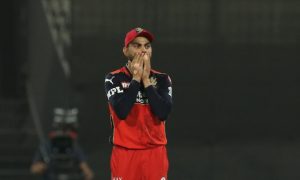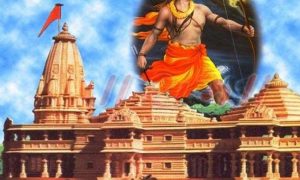The ICC Men’s Cricket World Cup is over, and the England (and Wales) team won it. Just. In the end it came down to the greater number of boundaries scored by England in the final against New Zealand, but throughout the tournament it was technology that proved decisive.
Unlike football, where Video Assistant Referee (VAR) technology has taken an age to catch on, the International Cricket Council (ICC) has been tech-savvy for years.
From HawkEye and Hotspot to Batcam and Spidercam, here are all the gadgets, the tech and the innovations that helped the umpires make the right call and the broadcasters bring the action alive. Howzat?!
1. STATSports trackers

During the World Cup the India National Cricket Team signed-up with UK sports technology company STATSports, whose wearable performance-monitoring tech is already used by Manchester United, Liverpool, Roma, Tottenham Hotspur and the Brazilian national football team.

Their wearable device is essentially a fitness tracker built into a base-layer vest that’s loaded with sensors that measure distance, speed, acceleration, deceleration, high-speed running, and the dynamic stress load of each player.
It means better monitoring of the cardio stresses on bowlers, who can tire quickly, as well as the rotations of batters’ ankle and knee joints. For us mere mortals, STATSports sells its GPS performance tracker.

2. HotSpot
Part of the umpire’s Decision Review System (DRS), HotSpot is all about leg before wicket (lbw).
The planting of a pad in front of the incoming ball to stop it hitting the wicket is the oldest trick in the book, but for the umpire, it can be desperately hard to judge whether contact was made with the batsman’s pad or bat, or both – if it’s bat and then pad, he can also be caught out.
Cue centuries of arguments until the arrival in 2006 of HotSpot, a tracking system that constitutes two SLX-Hawk infrared cameras that measures heat from friction to produce a frame showing the precise points of contact of the ball.
3. State-of-the-art TV coverage
You’d think that to cover 48 matches across 11 different venues would require some streamlined TV production plans. Not a bit of it. London-based Sunset+Vine, global production partner of the ICC, used a mobile outside broadcast unit, five technical teams, four production teams, 24 commentators, and 32 cameras to cover each match.
That included drones, super slow-mo, eight ultra-motion Hawk-Eye cameras, Buggy Cams, front and reverse view Stump Cams and Spidercam. A 15-second graphic countdown clock to DRS was shown on screen and in the ground.
However, there was one thing conspicuous by its absence from the World Cup: Ultra HD, which isn’t a big thing in India, by far cricket’s largest market for TV.
4. Hawk-Eye LBW detection system
Another part of DRS is Hawk-Eye, a tool that’s long been a default part of cricket broadcasts across the globe.
Comprising six cameras, three at each end of the ground, Hawk-Eye essentially tracks the ball and predicts its path. If the ball is determined to have been heading for the stumps when a batsman’s pad got in the way, it’s lbw.
Hawk-Eye has been provided by host broadcasters at major cricket matches since 2001, and at ICC events since 2008, when it became part of the DRS.
5. TRACAB Optical Player Tracking
Already used in the Premier League, German Bundesliga and Spanish La Liga, as well as major international UEFA and FIFA tournaments, and Major League Baseball, it was about time ChyronHego’s TRACAB made its way into cricket.
An advanced camera-based player and ball tracking system adopted by the graphics provider AE, this ICC-commissioned specialised version of TRACAB for live cricket shows viewers the exact field position of players as well as a range of data points, including running speed and distances covered.
6. Hawk-Eye UltraEdge
A sound-detection based system that’s part of Hawk-Eye and DRS is UltraEdge. Aimed at helping the umpire better judge lbw decisions, UltraEdge comprises stump microphones that clearly differentiate between the sounds created by different sources, specifically the bat, pads and clothing of the batsman.
What makes it different from the rival Snickometer technology is that UltraEdge uses ultra-slow-motion cameras, so the audio and visuals can be synced.
With that information, the umpire can decide whether a batsman has nicked the ball (‘caught an edge’) or not.
7. Batcam
This UK-based live drone filming and broadcasting company supplied three machines to all the Cricket World Cup venues: BatcamFLY and BatcamDRIVE. BatcamFLY is a drone equipped with a 360-degree camera that can produce an eye-line shot before racing up to 400ft for an atmospheric overview/skyline shot.
A remote-controlled 10x zoom camera on wheels, Batcam DRIVE produced those low tracking shots of batsmen leaving the pitch. Traveling at up to 30mph and equipped with automatic collision avoidance, this rugged 80cm-high buggy is remote controlled and has GPS tracking.
It was used primarily to get ground-level replay shots from behind the wicket-keeper.
8. Spidercam
Every time a new batsmen came into bat during the Cricket World Cup, Spidercam swooped down over them.
It proved pivotal; installed at every ground during the World Cup, Spidercam’s smooth aerial sweeps and angles were made even more pivotal to the viewing experience by their hosting of innovative augmented reality (AR) overlays.
Spidercam’s shots formed the environment for pop-up AR graphics of key players, and even the trophy itself placed in the middle of the ground.
9. Piero graphics analysis system
Making its debut at the World Cup was Piero, a package of 3D graphics to help pundits analyze and explain sports events.
In use for 15 years on the UK’s BBC soccer show Match of the Day, Piero is all about generating visual views of the field from any angle, and allowing pundits to manipulate players and draw lines.
It works by stitching together several camera feeds, and operates in conjunction with the CricViz data analysis and score predictor.
10. 360-degree replays
For the first time at a Cricket World Cup, broadcast coverage involved the production of 360-degree replays. Provided by Piero, using software that allows multiple camera feeds to be stitched together to create wraparound video, 360-degree video replays of matches were made available online on ICC TV.
It may be a game that’s a few centuries old and full of quaint rules and traditions, but when it comes to technology there are few sports as cutting-edge as cricket. Now, about that lack of Ultra HD…
For more updates: Like us on Facebook and follow us on Twitter & Instagram




































